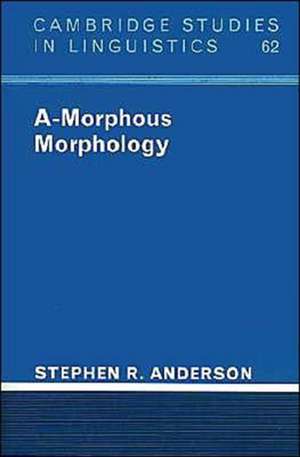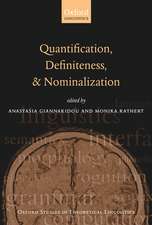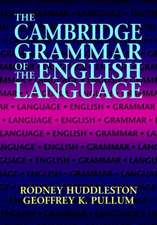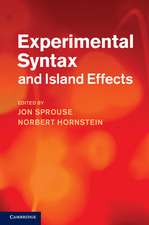A-Morphous Morphology: Cambridge Studies in Linguistics, cartea 62
Autor Stephen R. Andersonen Limba Engleză Paperback – 24 iun 1992
Din seria Cambridge Studies in Linguistics
-
 Preț: 178.20 lei
Preț: 178.20 lei -
 Preț: 239.36 lei
Preț: 239.36 lei -
 Preț: 176.27 lei
Preț: 176.27 lei -
 Preț: 236.78 lei
Preț: 236.78 lei - 9%
 Preț: 730.86 lei
Preț: 730.86 lei -
 Preț: 290.09 lei
Preț: 290.09 lei -
 Preț: 236.58 lei
Preț: 236.58 lei -
 Preț: 236.05 lei
Preț: 236.05 lei -
 Preț: 328.65 lei
Preț: 328.65 lei -
 Preț: 403.66 lei
Preț: 403.66 lei -
 Preț: 283.79 lei
Preț: 283.79 lei -
 Preț: 325.16 lei
Preț: 325.16 lei -
 Preț: 281.30 lei
Preț: 281.30 lei -
 Preț: 285.93 lei
Preț: 285.93 lei -
 Preț: 282.48 lei
Preț: 282.48 lei -
 Preț: 285.16 lei
Preț: 285.16 lei -
 Preț: 343.43 lei
Preț: 343.43 lei -
 Preț: 319.74 lei
Preț: 319.74 lei -
 Preț: 283.63 lei
Preț: 283.63 lei -
 Preț: 287.48 lei
Preț: 287.48 lei -
 Preț: 391.62 lei
Preț: 391.62 lei -
 Preț: 327.03 lei
Preț: 327.03 lei -
 Preț: 282.10 lei
Preț: 282.10 lei -
 Preț: 285.75 lei
Preț: 285.75 lei -
 Preț: 219.81 lei
Preț: 219.81 lei - 11%
 Preț: 509.10 lei
Preț: 509.10 lei -
 Preț: 220.57 lei
Preț: 220.57 lei -
 Preț: 455.74 lei
Preț: 455.74 lei -
 Preț: 247.08 lei
Preț: 247.08 lei -
 Preț: 222.19 lei
Preț: 222.19 lei -
 Preț: 324.40 lei
Preț: 324.40 lei -
 Preț: 322.29 lei
Preț: 322.29 lei -
 Preț: 399.59 lei
Preț: 399.59 lei -
 Preț: 326.15 lei
Preț: 326.15 lei - 11%
 Preț: 451.14 lei
Preț: 451.14 lei -
 Preț: 415.02 lei
Preț: 415.02 lei - 14%
 Preț: 724.58 lei
Preț: 724.58 lei
Preț: 361.75 lei
Nou
Puncte Express: 543
Preț estimativ în valută:
69.23€ • 72.18$ • 57.54£
69.23€ • 72.18$ • 57.54£
Carte tipărită la comandă
Livrare economică 21 martie-04 aprilie
Preluare comenzi: 021 569.72.76
Specificații
ISBN-13: 9780521378666
ISBN-10: 0521378664
Pagini: 452
Ilustrații: 1
Dimensiuni: 153 x 227 x 27 mm
Greutate: 0.72 kg
Editura: Cambridge University Press
Colecția Cambridge University Press
Seria Cambridge Studies in Linguistics
Locul publicării:Cambridge, United Kingdom
ISBN-10: 0521378664
Pagini: 452
Ilustrații: 1
Dimensiuni: 153 x 227 x 27 mm
Greutate: 0.72 kg
Editura: Cambridge University Press
Colecția Cambridge University Press
Seria Cambridge Studies in Linguistics
Locul publicării:Cambridge, United Kingdom
Cuprins
Acknowledgments; Introduction; 1. The study of word structure; 2. Why have a morphology at all?; 3. Is morphology really about morphemes?; 4. The interaction of morphology and syntax; 5. The theory of inflection; 6. Some complex inflectional systems; 7. Morphology in the lexicon: derivation; 8. Clitics are phrasal affixes; 9. The relation of morphology to phonology; 10. How much structure do words have?; 11. Composites: words with internal structure; 12. Morphology and the typology of languages; 13. Morphological change; 14. Morphology as a computational problem; References; Index.
















